1.Identification
1.1 GHS Product identifier
| Product name | Diethanolamine |
|---|
1.2 Other means of identification
| Product number | - |
|---|---|
| Other names | DEA |
1.3 Recommended use of the chemical and restrictions on use
| Identified uses | For industry use only. Diethanolamine is used in cutting oils, soaps, shampoos, cleaners, polishers, cosmetics, and pharmaceuticals. It is also used as an intermediate in the rubber chemicals industry, as a humectant and softening agent, and as an emulsifier and dispersing agent in various agricultural chemicals. |
|---|---|
| Uses advised against | no data available |
1.4 Supplier's details
| Company | MOLBASE (Shanghai) Biotechnology Co., Ltd. |
|---|---|
| Address | Floor 4 & 5, Building 12, No. 1001 North Qinzhou Road, Xuhui District, Shanghai, China |
| Telephone | +86(21)64956998 |
| Fax | +86(21)54365166 |
1.5 Emergency phone number
| Emergency phone number | +86-400-6021-666 |
|---|---|
| Service hours | Monday to Friday, 9am-5pm (Standard time zone: UTC/GMT +8 hours). |
2.Hazard identification
2.1 Classification of the substance or mixture
Acute toxicity - Oral, Category 4
Skin irritation, Category 2
Serious eye damage, Category 1
Specific target organ toxicity – repeated exposure, Category 2
2.2 GHS label elements, including precautionary statements
| Pictogram(s) |    |
|---|---|
| Signal word | Danger |
| Hazard statement(s) | H302 Harmful if swallowed H315 Causes skin irritation H318 Causes serious eye damage |
| Precautionary statement(s) | |
| Prevention | P264 Wash ... thoroughly after handling. P270 Do not eat, drink or smoke when using this product. P280 Wear protective gloves/protective clothing/eye protection/face protection. P260 Do not breathe dust/fume/gas/mist/vapours/spray. |
| Response | P301+P312 IF SWALLOWED: Call a POISON CENTER/doctor/…if you feel unwell. P330 Rinse mouth. P302+P352 IF ON SKIN: Wash with plenty of water/... P321 Specific treatment (see ... on this label). P332+P313 If skin irritation occurs: Get medical advice/attention. P362+P364 Take off contaminated clothing and wash it before reuse. P305+P351+P338 IF IN EYES: Rinse cautiously with water for several minutes. Remove contact lenses, if present and easy to do. Continue rinsing. P310 Immediately call a POISON CENTER/doctor/… P314 Get medical advice/attention if you feel unwell. |
| Storage | none |
| Disposal | P501 Dispose of contents/container to ... |
2.3 Other hazards which do not result in classification
none
3.Composition/information on ingredients
3.1 Substances
| Chemical name | Common names and synonyms | CAS number | EC number | Concentration |
|---|---|---|---|---|
| Diethanolamine | Diethanolamine | 111-42-2 | none | 100% |
4.First-aid measures
4.1 Description of necessary first-aid measures
General advice
Consult a physician. Show this safety data sheet to the doctor in attendance.
If inhaled
Fresh air, rest.
In case of skin contact
Remove contaminated clothes. Rinse skin with plenty of water or shower.
In case of eye contact
First rinse with plenty of water for several minutes (remove contact lenses if easily possible), then refer for medical attention.
If swallowed
Rinse mouth. Give one or two glasses of water to drink. Refer for medical attention . Rest.
4.2 Most important symptoms/effects, acute and delayed
Irritation of eyes and skin. Breathing vapors may cause coughing, a smothering sensation, nausea, headache. (USCG, 1999)
4.3 Indication of immediate medical attention and special treatment needed, if necessary
Immediate first aid: Ensure that adequate decontamination has been carried out. If patient is not breathing, start artificial respiration, preferably with a demand valve resuscitator, bag-valve-mask device, or pocket mask, as trained. Perform CPR if necessary. Immediately flush contaminated eyes with gently flowing water. Do not induce vomiting. If vomiting occurs, lean patient forward or place on the left side (head-down position, if possible) to maintain an open airway and prevent aspiration. Keep patient quiet and maintain normal body temperature. Obtain medical attention. /Organic bases/Amines and related compounds/
5.Fire-fighting measures
5.1 Extinguishing media
Suitable extinguishing media
Wear self contained breathing apparatus for fire fighting if necessary.
5.2 Specific hazards arising from the chemical
Special Hazards of Combustion Products: Irritating vapors are generated when heated. (USCG, 1999)
5.3 Special protective actions for fire-fighters
Wear self-contained breathing apparatus for firefighting if necessary.
6.Accidental release measures
6.1 Personal precautions, protective equipment and emergency procedures
Use personal protective equipment. Avoid dust formation. Avoid breathing vapours, mist or gas. Ensure adequate ventilation. Evacuate personnel to safe areas. Avoid breathing dust. For personal protection see section 8.
6.2 Environmental precautions
Personal protection: filter respirator for organic gases and particulates adapted to the airborne concentration of the substance. Sweep spilled substance into covered sealable containers. If appropriate, moisten first to prevent dusting. Then store and dispose of according to local regulations.
6.3 Methods and materials for containment and cleaning up
Personal precautions, protective equipment and emergency procedures: Use personal protective equipment. Avoid breathing vapours, mist or gas. Ensure adequate ventilation. Evacuate personnel to safe areas.
7.Handling and storage
7.1 Precautions for safe handling
Avoid contact with skin and eyes. Avoid formation of dust and aerosols. Avoid exposure - obtain special instructions before use.Provide appropriate exhaust ventilation at places where dust is formed. For precautions see section 2.2.
7.2 Conditions for safe storage, including any incompatibilities
Separated from strong oxidants and acids. Dry.Keep container tightly closed in a dry and well-ventilated place. Containers which are opened must be carefully resealed and kept upright to prevent leakage. Air sensitive.
8.Exposure controls/personal protection
8.1 Control parameters
Occupational Exposure limit values
Recommended Exposure Limit: 10 Hour Time-Weighted Average: 3 ppm (15 mg/cu m).
Biological limit values
no data available
8.2 Appropriate engineering controls
Handle in accordance with good industrial hygiene and safety practice. Wash hands before breaks and at the end of workday.
8.3 Individual protection measures, such as personal protective equipment (PPE)
Eye/face protection
Safety glasses with side-shields conforming to EN166. Use equipment for eye protection tested and approved under appropriate government standards such as NIOSH (US) or EN 166(EU).
Skin protection
Wear impervious clothing. The type of protective equipment must be selected according to the concentration and amount of the dangerous substance at the specific workplace. Handle with gloves. Gloves must be inspected prior to use. Use proper glove removal technique(without touching glove's outer surface) to avoid skin contact with this product. Dispose of contaminated gloves after use in accordance with applicable laws and good laboratory practices. Wash and dry hands. The selected protective gloves have to satisfy the specifications of EU Directive 89/686/EEC and the standard EN 374 derived from it.
Respiratory protection
Wear dust mask when handling large quantities.
Thermal hazards
no data available
9.Physical and chemical properties
| Physical state | solid or viscous liquid with an amine odour |
|---|---|
| Colour | A faintly colored, viscous liquid or deliquescent prisms |
| Odour | Mild, ammonia-like odor |
| Melting point/ freezing point | 255°C(lit.) |
| Boiling point or initial boiling point and boiling range | 217°C/150mmHg(lit.) |
| Flammability | Class IIIB Combustible Liquid: Fl.P. at or above 93.33°C.Combustible SolidCombustible. |
| Lower and upper explosion limit / flammability limit | Lower flammable limit: 1.6% by volume (calculated); Upper flammable limit: 9.8% by volume (estimated) |
| Flash point | 138°C |
| Auto-ignition temperature | 365°C |
| Decomposition temperature | no data available |
| pH | Strong base. pH of 0.1 N aqueous solution: 11.0 |
| Kinematic viscosity | 351.9 cP at 30°C; 53.85 cP at 60°C |
| Solubility | In water:MISCIBLE |
| Partition coefficient n-octanol/water (log value) | log Kow= - 1.43 |
| Vapour pressure | <0.98 atm ( 100 °C) |
| Density and/or relative density | 1.097g/mLat 25°C(lit.) |
| Relative vapour density | 3.6 (vs air) |
| Particle characteristics | no data available |
10.Stability and reactivity
10.1 Reactivity
no data available
10.2 Chemical stability
Stable under recommended storage conditions.
10.3 Possibility of hazardous reactions
Combustile, when exposed to heat or flame; can react with oxidizing materials.The vapour is heavier than air.DIETHANOLAMINE is an aminoalcohol. Amines are chemical bases. They neutralize acids to form salts plus water. These acid-base reactions are exothermic. The amount of heat that is evolved per mole of amine in a neutralization is largely independent of the strength of the amine as a base. Amines may be incompatible with isocyanates, halogenated organics, peroxides, phenols (acidic), epoxides, anhydrides, and acid halides. Flammable gaseous hydrogen is generated by amines in combination with strong reducing agents, such as hydrides. This compound is hygroscopic. It may be sensitive to exposure to air and light. This compound can react with oxidizing materials, acids, CO2, copper alloys, aluminum, zinc, galvanized iron and copper.
10.4 Conditions to avoid
no data available
10.5 Incompatible materials
DEA (Diethanolamine) degrades in the presense of carbon dioxide to yield HEOD [3-(2-hydroxy-ethyl)oxazolidone], THEED [N,N,N,'-(2-hydroxyethyl)ethyleen-diamine] and BHEP [N,N'-bis(2-hydroxyethyl)piperazine.
10.6 Hazardous decomposition products
Special hazards arising from the substance or mixture: Carbon oxides, nitrogen oxides (NOx). Nature of decomposition products not known.
11.Toxicological information
Acute toxicity
- Oral: LD50 Rat oral 710 mg/kg
- Inhalation: no data available
- Dermal: no data available
Skin corrosion/irritation
no data available
Serious eye damage/irritation
no data available
Respiratory or skin sensitization
no data available
Germ cell mutagenicity
no data available
Carcinogenicity
Evaluation: Cancer in humans: There is inadequate evidence in humans for the carcinogenicity of diethanolamine. Cancer in experimental animals: There is sufficient evidence in experimental animals for the carcinogenicity of diethanolamine. Overall evaluation: Diethanolamine is possibly carcinogen to humans (Group 2B).
Reproductive toxicity
No information is available on the reproductive or developmental effects of diethanolamine in humans. Animal studies have reported testicular degeneration and reduced sperm motility and count from oral exposure to diethanolamine. (10)
STOT-single exposure
no data available
STOT-repeated exposure
no data available
Aspiration hazard
no data available
12.Ecological information
12.1 Toxicity
- Toxicity to fish: LC50; Species: Lepomis macrochirus (Bluegill) weight 5 g, length 7 (5-11) cm; Conditions: freshwater, static, 20°C, pH 6.9-7.5, hardness 84.0-163 mg/L CaCO3, alkalinity 33.0-81.0 mg/L CaCO3, dissolved oxygen >5 mg/L; Concentration: 2100000 ug/L for 24 hr /formulation
- Toxicity to daphnia and other aquatic invertebrates: LC50; Species: Daphnia magna (Water Flea) age < or =24 hr; Conditions: freshwater, static, 20-22°C, pH 7.6-7.7; Concentration: 180000 ug/L for 24 hr /formulation
- Toxicity to algae: no data available
- Toxicity to microorganisms: no data available
12.2 Persistence and degradability
AEROBIC: Biodegradation of diethanolamine has been reported in many die-away tests(1-3). N-Nitrosodiethanolamine has been identified as a metabolite of diethanolamine in natural water samples and sewage(2).Media Initial Concn Incubation Time (days) % Biodegradation Reference River Water 21 mg/L 4 5 1 River Water 210 ug/L 4 55 1 River Water 21 ng/L 4 32 1 Lake Water 1.1 ppm 14 31 2 Acidic Lake Water 1.1 ppm 14 1.2 2 Sewage 1.1 ppm 14 53 2 River Water 50 ppm 10 90 3
12.3 Bioaccumulative potential
An estimated BCF of 3 was calculated in fish for diethanolamine(SRC), using a log Kow of -1.43(1) and a regression-derived equation(2). According to a classification scheme(3), this BCF suggests the potential for bioconcentration in aquatic organisms is low(SRC).
12.4 Mobility in soil
The Koc of diethanolamine has been reported as 3.97(1) and an experimental log Koc of 0.60(2). According to a classification scheme(3), these Koc values suggest that diethanolamine is expected to have very high mobility in soil. The pKa of diethanolamine is 8.96(4), indicating that this compound will exist partially in cation form in the environment and cations generally adsorb more strongly to soils containing organic carbon and clay than their neutral counterparts(5). Diethanolamine has been shown to adsorb to humic acid which may be contained in soils and sediments(6). The adsorption of diethanolamine on humic acid changed very slightly from pH 4-8, (40-45% adsorption)(6).
12.5 Other adverse effects
no data available
13.Disposal considerations
13.1 Disposal methods
Product
The material can be disposed of by removal to a licensed chemical destruction plant or by controlled incineration with flue gas scrubbing. Do not contaminate water, foodstuffs, feed or seed by storage or disposal. Do not discharge to sewer systems.
Contaminated packaging
Containers can be triply rinsed (or equivalent) and offered for recycling or reconditioning. Alternatively, the packaging can be punctured to make it unusable for other purposes and then be disposed of in a sanitary landfill. Controlled incineration with flue gas scrubbing is possible for combustible packaging materials.
14.Transport information
14.1 UN Number
| ADR/RID: UN3077 | IMDG: UN3077 | IATA: UN3077 |
14.2 UN Proper Shipping Name
| ADR/RID: ENVIRONMENTALLY HAZARDOUS SUBSTANCE, SOLID, N.O.S. |
| IMDG: ENVIRONMENTALLY HAZARDOUS SUBSTANCE, SOLID, N.O.S. |
| IATA: ENVIRONMENTALLY HAZARDOUS SUBSTANCE, SOLID, N.O.S. |
14.3 Transport hazard class(es)
| ADR/RID: 9 | IMDG: 9 | IATA: 9 |
14.4 Packing group, if applicable
| ADR/RID: II | IMDG: II | IATA: II |
14.5 Environmental hazards
| ADR/RID: no | IMDG: no | IATA: no |
14.6 Special precautions for user
no data available
14.7 Transport in bulk according to Annex II of MARPOL 73/78 and the IBC Code
no data available
15.Regulatory information
15.1 Safety, health and environmental regulations specific for the product in question
| Chemical name | Common names and synonyms | CAS number | EC number |
|---|---|---|---|
| Diethanolamine | Diethanolamine | 111-42-2 | none |
| European Inventory of Existing Commercial Chemical Substances (EINECS) | Listed. | ||
| EC Inventory | Listed. | ||
| United States Toxic Substances Control Act (TSCA) Inventory | Listed. | ||
| China Catalog of Hazardous chemicals 2015 | Listed. | ||
| New Zealand Inventory of Chemicals (NZIoC) | Listed. | ||
| Philippines Inventory of Chemicals and Chemical Substances (PICCS) | Listed. | ||
| Vietnam National Chemical Inventory | Listed. | ||
| Chinese Chemical Inventory of Existing Chemical Substances (China IECSC) | Listed. | ||
16.Other information
Information on revision
| Creation Date | Aug 10, 2017 |
|---|---|
| Revision Date | Aug 10, 2017 |
Abbreviations and acronyms
- CAS: Chemical Abstracts Service
- ADR: European Agreement concerning the International Carriage of Dangerous Goods by Road
- RID: Regulation concerning the International Carriage of Dangerous Goods by Rail
- IMDG: International Maritime Dangerous Goods
- IATA: International Air Transportation Association
- TWA: Time Weighted Average
- STEL: Short term exposure limit
- LC50: Lethal Concentration 50%
- LD50: Lethal Dose 50%
- EC50: Effective Concentration 50%
References
- IPCS - The International Chemical Safety Cards (ICSC), website: http://www.ilo.org/dyn/icsc/showcard.home
- HSDB - Hazardous Substances Data Bank, website: https://toxnet.nlm.nih.gov/newtoxnet/hsdb.htm
- IARC - International Agency for Research on Cancer, website: http://www.iarc.fr/
- eChemPortal - The Global Portal to Information on Chemical Substances by OECD, website: http://www.echemportal.org/echemportal/index?pageID=0&request_locale=en
- CAMEO Chemicals, website: http://cameochemicals.noaa.gov/search/simple
- ChemIDplus, website: http://chem.sis.nlm.nih.gov/chemidplus/chemidlite.jsp
- ERG - Emergency Response Guidebook by U.S. Department of Transportation, website: http://www.phmsa.dot.gov/hazmat/library/erg
- Germany GESTIS-database on hazard substance, website: http://www.dguv.de/ifa/gestis/gestis-stoffdatenbank/index-2.jsp
- ECHA - European Chemicals Agency, website: https://echa.europa.eu/


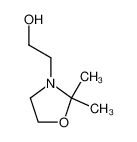





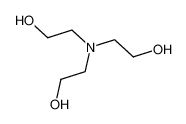



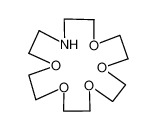










-
-

-
-
-

-
-
-
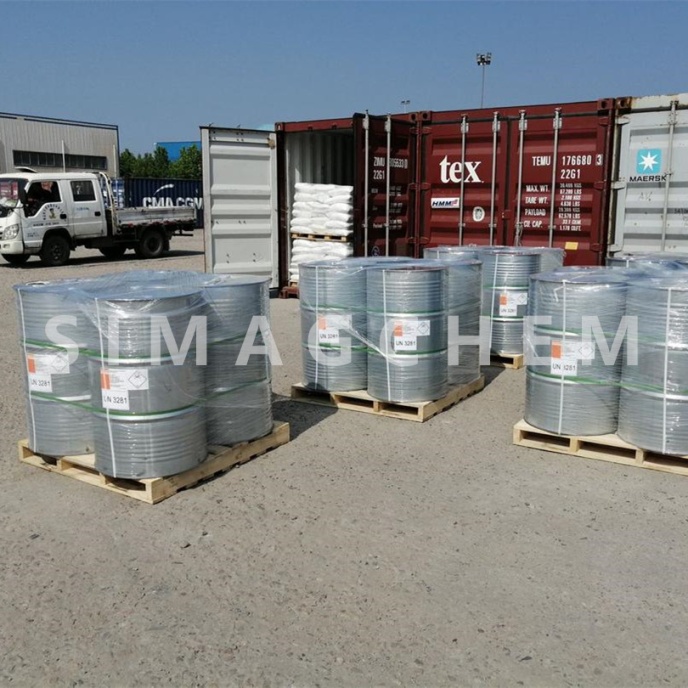
-
-
-

-
-
-

-
-
-

-
-
-
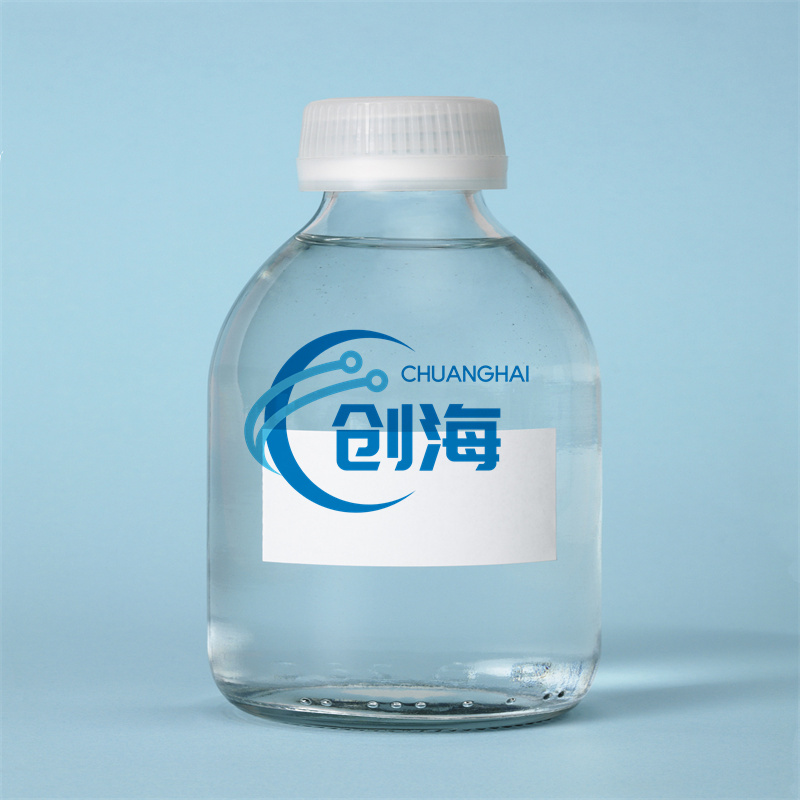
-
-
-
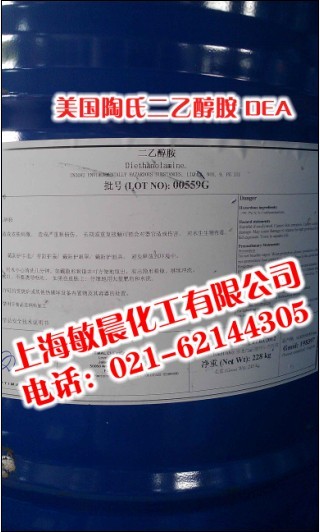
-
-
-

-
-
-

-
More Suppliers>>Wenzhou Win-Win Chemical Co., Ltd.
CHINA
Purity: 98%
Lead Time: 3 Day(s)
Price: -
Hangzhou J&H Chemical Co., Ltd.
CHINA
Purity: >97%
Lead Time: 7 Day(s)
Price: -
Xiamen Zhixin Chemical Co., Ltd.
CHINA
Purity: 99%
Lead Time: 3 Day(s)
Price: -
Skyrun Industrial Co., Limited
CHINA
Purity: 99%
Lead Time: 7 Day(s)
Price: -
Hangzhou DayangChem Co., Ltd
CHINA
Purity: 98%
Lead Time: 7 Day(s)
Price: -
Hangzhou Bingochem Co., Ltd.
CHINA
Purity: 98%
Lead Time: 7 Day(s)
Price: -
CHINA
Purity: 99%
Lead Time: 3 Day(s)
Price: Min $100 /kg
Shanghai CaoShi Chemical Technology Development Co. Ltd.
CHINA
Purity: 99.9%
Lead Time: 2 Day(s)
Price: Min $1633.33 /kg
Shenzhen Hanxiang Chemical Co., Ltd
CHINA
Purity: 99.3%
Lead Time: 14 Day(s)
Price: Min $2000 /吨
Shanghai Baorui Chemical Co., Ltd.
CHINA
Purity: 99.9%
Lead Time: 14 Day(s)
Price: Min $1916.67 /kg